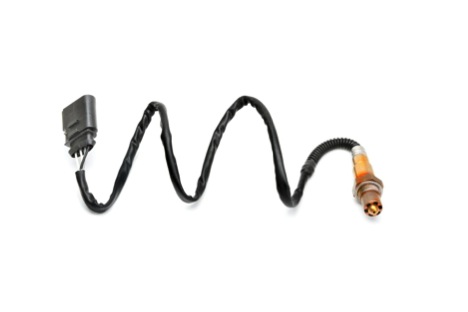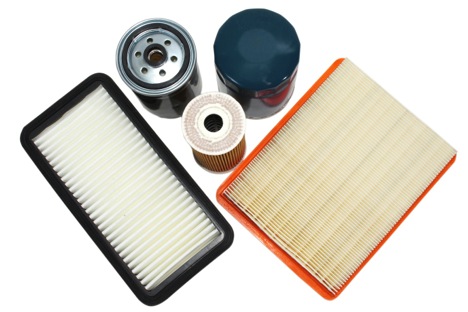Five Performance Upgrades That Will Boost Your Gas Mileage | Team C
Five Performance Upgrades That Will Boost Your Gas Mileage
While low gas prices have made fuel economy less of a concern than it was during the oil spike of the mid-00s, automobile owners should give some thought to how they can make their vehicles more efficient. What comes down must go up, and it’s only a matter of time before the low oil prices we’ve enjoyed for the last few years rise again.
The great news for automotive customization and modification enthusiasts is that there are many performance auto parts you can install in your vehicle to improve its fuel economy. For gearheads and stats nerds, automotive modification to achieve greater fuel economy offers a fun and stimulating challenge.
- Intake kits – Engines rely on a mix of fuel and air to create the combustion that powers your vehicle. Tinkering with the fuel/air ratio can lead to more power or better fuel economy. Aftermarket performance air intakes can help auto owners adjust the fuel/air ratio in their engines and can improve mileage if installed correctly.
OEM (original equipment manufacturer) intakes are designed to reduce noise. Aftermarket kits make noise reduction a lesser priority. Most consumers buy performance intakes to improve horsepower and torque, but a new air intake can improve fuel economy. For example, a cold air intake can improve power efficiency in a vehicle. Automotive experts estimate that for every 10-degree reduction in air temperature, power efficiency increases by one percent.
If you’re considering installing an air intake kit to improve fuel economy or boost the fuel efficiency of your vehicle, it’s smart to consult with a performance auto parts supplier and mechanic who can advise you on the best parts for your vehicle.
- Exhaust systems – Many people never give much thought to their vehicles’ exhaust systems. They’re just tailpipes, right? The truth is that your automobile’s exhaust system can have an impact on fuel economy and overall performance.
A more free-flowing exhaust system can improve fuel economy by boosting engine efficiency. An exhaust system that slows down or has impediments to transferring exhaust from the engine to outside the vehicle will diminish its efficiency and fuel economy. Many exhaust systems are designed to muffle sound, and they make sacrifices in efficiency to meet this goal.
Performance exhaust systems are designed with efficiency in mind. Performance exhaust systems typically have fewer bends than regular exhaust systems, allowing them to move exhaust from the engine to outside the vehicle more quickly. For small vehicles, the results an aftermarket exhaust system can achieve are significant. By installing an aftermarket performance exhaust system, small vehicles can see engine efficiency improvements of between 2 and 10 percent.
Getting the right exhaust kit is important if you’re trying to boost fuel economy. Before making a purchase, carefully research the part you’re considering buying and also do a little homework on the manufacturer. Consulting with trusted suppliers of performance car parts is a good idea, as they have the expertise and experience needed to make a solid recommendation.
- Oxygen sensor – Modern automobiles are more efficient than older vehicles because their engines make use of computer technology to allow more precise combustion. Modern engines use a variety of sensors to manage engine performance, including oxygen sensors. An oxygen sensor is mounted in the exhaust manifold and monitors how much unburned oxygen is in the exhaust. The sensor informs the engine computer about whether it is optimally using oxygen in the fuel/air mix necessary for combustion.

Oxygen sensors wear out over time, necessitating their replacement. Also, higher-quality oxygen sensors will be more durable and accurate than many factory oxygen sensors. For auto owners looking for performance tweaks to enhance fuel economy, replacing oxygen sensors is one of the easier fixes they can make.
- Spark plugs – By replacing your spark plugs with better-quality performance spark plugs, you can obtain an increase in fuel economy.
Spark plugs fit into the cylinder head of your engine and ignite the air/fuel mix by creating an electric spark. The plugs also work to remove unwanted thermal energy from the combustion chamber and move it to the engine’s cooling system.
High-quality spark plugs improve fuel economy with more accurate firing. Regular spark plugs aren’t as efficient, and spark plugs that are old or malfunctioning will misfire and reduce fuel economy. Automotive experts estimate that bad spark plugs can reduce fuel economy by up to 30 percent.
If you’re looking for a fast and easy way to improve the fuel economy of your vehicle, spark plugs aren’t a bad place to start, as this often-overlooked component can be costing you at the pump. Changing spark plugs is relatively easy and, if you’re curious about the right brand to purchase, a conversation with sales reps at a performance auto parts store can set you on the right path.
- Air filter – Replacing your air filter is another simple fix to improve fuel economy. Air filters protect your engine by keeping dirt, debris, and other contaminants from entering the engine and causing clogs and other damage. When filters become dirty, their effectiveness decreases, so changing a dirty air filter is always a good idea.

Air filters designed for performance purposes increase air flow to an engine, allowing it to operate more efficiently. Replacing regular air filters with performance filters is one of the easiest modifications you can make to your vehicle—and just about anyone can do it.
While specialized parts and upgrades can improve the fuel economy of your vehicle, there’s no substitute for good maintenance. By practicing some good maintenance habits, such as regularly changing your oil, keeping tires at the right pressure, and addressing problems as they arise, you can ensure your vehicle remains in great condition and avoid losses of efficiency that occur when mechanical function is impaired.
Gas Price Increase Imminent
In the past few years, as the economy has improved, and gas prices have dropped to multi-year lows, many of us have forgotten the lessons of the Great Recession. Sales of big SUVs and other large vehicles have increased (although these vehicles have made advances in fuel economy in recent years) and consumers appear to be showing less interest in fuel-sippers like small cars and hybrids. SUVs are less efficient than smaller cars by about 30 percent, on average.
Nevertheless, gas prices will eventually rise again. In recent months, the price of gasoline has been steadily increasing. In April 2018, AAA reported an average gas price of around $2.66 per gallon, up 33 cents from the previous April. Decisions by major oil producers and geopolitical concerns are also driving up the price of gasoline.
Investing now in some performance upgrades to your vehicle can help you avoid paying big prices at the pump later. Working with a respected dealer in performance auto parts and a machine shop can help you ensure you get the right parts and install them correctly. Getting the wrong parts or installing parts incorrectly can negate any expected efficiency gains, so it’s important to get it right.
Team C Performance Center is a Los Angeles performance car parts and full-service machine shop. In business for nearly four decades, Team C Performance Center carries products from more than 150 manufacturers, including Auto Meter, ARP, Billet Specialties, Comp Cams, Royal Purple, PRW Industries, and Thermo-Tec. The company’s machine shop also offers expert service for engine block work, valve jobs, rebuilds, and much more. If you’re serious about optimizing your vehicle’s performance, visit Team C Performance Center today.
Source

You must login to post comments.